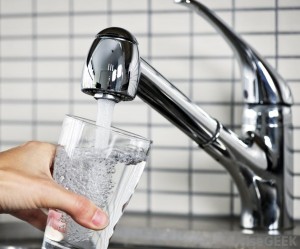
High water pressure puts stress on your plumbing system. Supply lines, hot and cold water piping, toilets, dishwashers, ice makers, washing machines, water heaters and water hoses will wear out prematurely if they don’t burst on you first. You may be looking at major flooding and costly repairs. Excess water pressure can also get you in trouble with the city. Many municipalities require a limit to your water pressure of 65 pounds max.
Your water heater has welded seams and screw on fittings that can leak after exposure to high water pressure. The Temperature and Pressure relief valve on the water heater will weaken from excessive pressure and require premature replacement. Your dishwasher, clothes washer and ice machine have solenoid valves that literally slam shut when water is no longer needed in the appliance. High water pressure can burst these valves and create a flood. Toilets have a weak plastic valve in the tank that wears prematurely and often does not close properly under high water pressure. This can waste water without your knowledge. Garden hoses will certainly wear out prematurely. Water hammers, (banging noises in the walls and under the house), can be cured or reduced by lowering your water pressure.
To determine your water pressure, put a 150 to 200lb pressure gauge on any cold water hose bib. This will give you your static water pressure. If your water pressure is over 65lbs, check to see if you have a pressure regulator. If you have a pressure regulator it may need adjusting or replacing. If you don’t have one, you need to have one installed now.
Find and adjust the pressure regulator valve for the building
A water pressure regulator may be installed in your system. This device, usually a few inches across and often shaped a bit like a bell, may be found installed quite close to the building or at the water meter. The water meter is often installed where water pipes enter the building or at the street. You will see a set-screw secured by a lock-nut on the top of the pressure regulating valve or water pressure reducing valve. On most pressure regulators, after loosening the lock-nut around the adjusting screw, turning the screw in will increase the water pressure. Don’t overdo-it. Just a turn or two should make a difference. Keep track of the number of turns so that you can go back to where you started if necessary. Put a gauge on any cold water hose bib and check your gauge for pressure changes.
